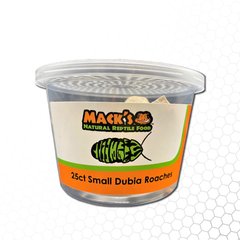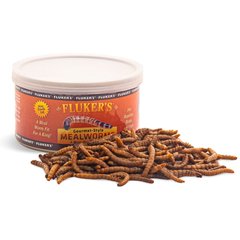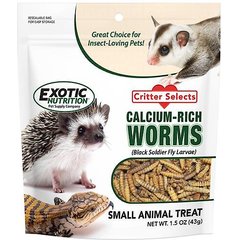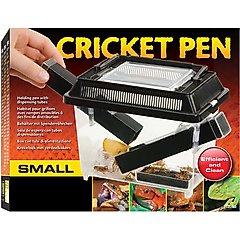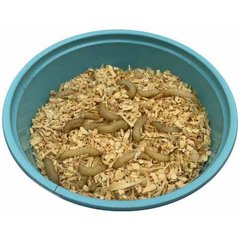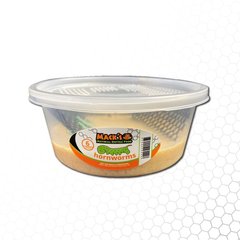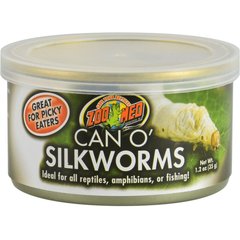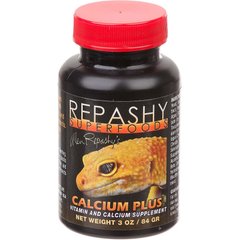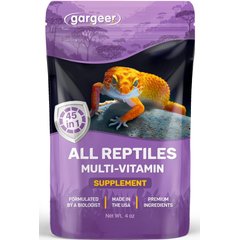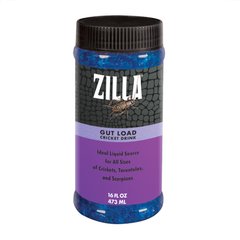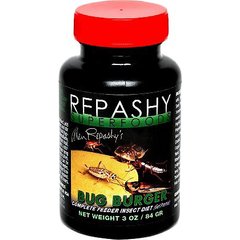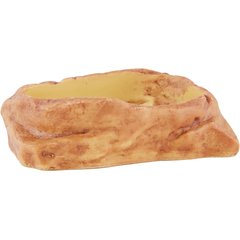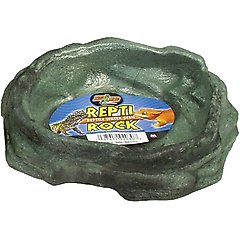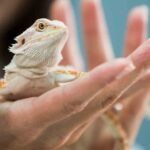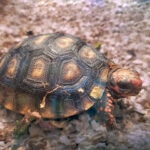What Do Leopard Geckos Eat?
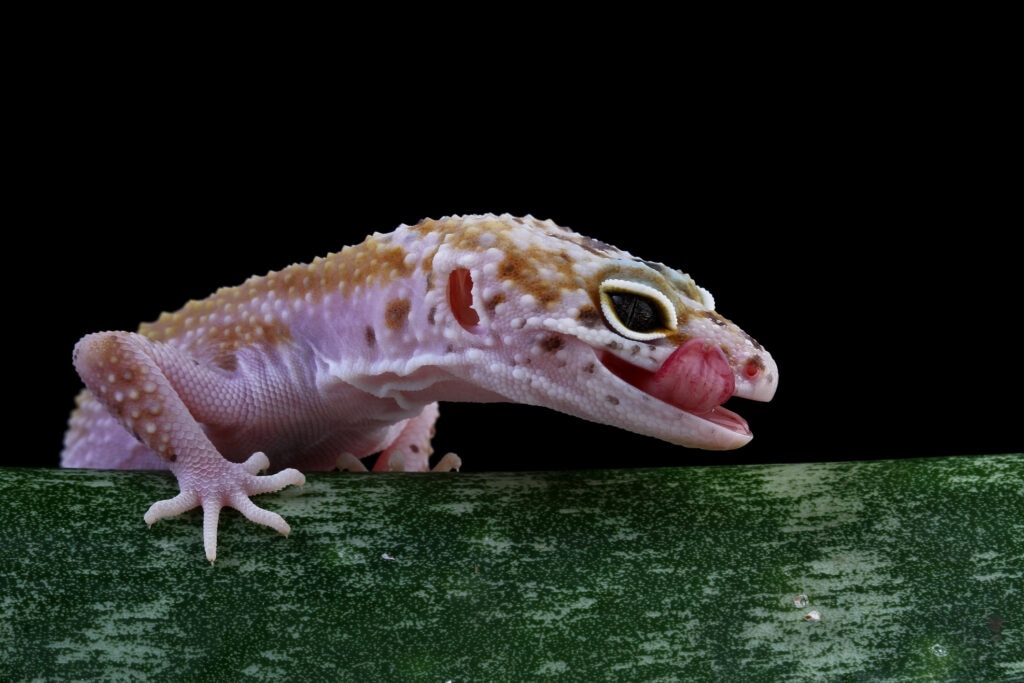
Photo by agus fitriyanto/iStock / Getty Images Plus via Getty Images
Leopard geckos are one of the most popular pet reptiles—and for good reason. They’re hardy, low-maintenance, and have great personalities. But even with their easygoing nature, you must meet their needs.
Whether this is your first leopard gecko or you want to improve your gecko’s care, this guide will help you improve your scaly pal’s diet.
Key Takeaways
- Leopard geckos eat insects including crickets, mealworms, and roaches.
- Pet leopard geckos often need a vitamin supplement added to their diet.
- You can gut-load insects to pack them with the nutrients your leopard gecko needs.
What Does the Leopard Gecko Eat in the Wild?
Leopard geckos come from the rocky, scrubby desert and grasslands in Afghanistan, western Nepal, northwest India, Pakistan, and some parts of Iran. Diets for wild leopard geckos vary, according to their age and food availability.
Young geckos usually stick with small insects and grubs, but as they get older and bigger, they branch out and any of the following can become a meal:
- Insects
- Grubs
- Beetles
- Spiders
- Scorpions
Although their prey is moving and active, leopard geckos are opportunistic hunters, not active ones. These geckos are more likely to sit and wait for food to come to them, because it conserves energy and reduces the risk of becoming prey.
Some older and larger leopard geckos may become cannibalistic, which makes many people choose not to keep two or more together. While it’s often a response to a food shortage, cohabbing leopard geckos require a lot more space than a single animal, explains Denise Cieri, founder of HerpHaven Reptile Rescue and Sanctuary in Brunswick, Maine.
Joe Yingling, owner of Lake Erie Leopard Geckos in Ohio, says that he keeps all his geckos separate for better sanitation and to prevent fights.
“The only time there’s more than one gecko is when they hatched at the same time or when they’re being paired for breeding,” he says.
What Do Leopard Geckos Eat as Pets?
Pet leopard geckos thrive on a varied diet of live insects, though convenience and availability often shape what pet parents choose.
While mealworms are commonly used, other feeder insects like dubia roaches, soldier fly larvae, and crickets also provide great nutrition. Some options, like crickets, can be messy or carry parasites, so it’s important to choose feeders that are clean and safe.
Dubia Roaches
Nutritionally balanced dubia roaches are one of the best feeder insects for leopard geckos. They’re easy to care for and don’t require dusting before feeding.
Recommended Product
Mealworms
Mealworms are high in protein and great for muscle growth. As an easy-to-source food, they’re very affordable. Try Fluker’s Gourmet-Style Mealworms.
Recommended Product
Some geckos, especially juveniles, may struggle with the tough exoskeleton of mealworms, so be sure to monitor your gecko as they eat, especially if they’re young.
Soldier Fly Larvae
Fly larvae are highly nutritious and have a naturally high calcium content. Soldier fly larvae are easy for your gecko to digest, even for juveniles or sick geckos. Try Exotic Nutrition Dried Black Soldier Fly Larvae Treats.
Recommended Product
Fly larvae are easy to store in the fridge and don’t need extra feeding or maintenance. You might find them under names like:
- Phoenix worms
- ReptiWorms
- CalciWorms
Crickets
Crickets have a good balance of protein to fat. Like mealworms, they are easy to get and affordable.
Crickets are an active prey that stimulates a leopard gecko’s hunting behavior. These insects can be gut-loaded 24–48 hours before feeding to your gecko, to ensure optimal nutrition.
Crickets must be cared for properly for them to survive until they are consumed by your gecko. They have a short lifespan and need to be kept warm, ventilated, and fed.
As sneaky escape artists, crickets generally have a habit of getting everywhere in your house, so make sure your cricket enclosure is just as escape-proof as your pet gecko’s habitat. Try the Exo Terra Cricket Pen.
Recommended Product
Treats, Please! Occasional Snacks for Leopard Geckos
Even a leopard gecko loves an occasional treat. The following are fantastic in moderation, whether because of nutrition or low cost:
- Waxworms are tasty treats but are high in fat and low in calcium. They’re great for underweight geckos to help them pack on a few grams. Try ABDragons Live Waxworms.
Recommended Product
- Hornworms are low in fat and can help hydrate a gecko. Try Mack’s Natural Reptile Food Hornworm Live Feed.
Recommended Product
- Superworms, like Top Hat Crickets Superworms, can bite your gecko and should only be fed under supervision to gecko adults.
Recommended Product
- Silkworms are nutritionally dense and highly digestible—so if you find an affordable source for silkworms, use it! They’re listed as a treat because of their cost and lack of availability. Try Zoo Med Can O’ Silkworms.
Recommended Product
Do Leopard Geckos Need Supplements?
Whether and how much supplementation your leopard gecko needs depends on their diet and lighting setup. If all you can get to feed them are crickets, then yes, they need a supplement.
And because they don’t need a lot of UVB, they can get the vitamin D3 they need from supplements.
For reptiles like leopard geckos, a balance of calcium, phosphorus, and D3 are critical to their long-term health. Feeder insects with a calcium to phosphorus ratio of 2:1 is ideal, which is what makes dubia roaches such a great feeder.
These vital nutrients work together to form strong bones and tissues. However, too much phosphorus in their diet and it binds the calcium, preventing it from being absorbed into the body.
How Do Geckos Take Vitamins?
There are a few ways for geckos to take their vitamins.
Self-Supplementation
Self-supplementation is great for reptile owners who want to allow their leopard geckos to supplement when they feel the need.
Cieri and Yingling recommend including a good-quality calcium supplement, like Repashy Superfoods Calcium Plus, in a small bowl within their enclosure. Yingling uses a blend of calcium and multivitamin, like Gargeer Reptile & Amphibian Multi-Vitamin, as part of his geckos’ regular routine.
Recommended Products
Dusting
Dusting involves putting your leopard gecko’s feeder insects and their supplement powder into a zipper bag together and shaking them gently until all the feeders are coated. Then feed as normal.
- For geckos under 8 months old, ill or recovering geckos, or females carrying eggs, dust at every feeding.
- For geckos 8–12 months old, dust two to three times per week.
- For adult geckos over 1 year old, dust once or twice per week.
Gut-Loading
In gut-loading, you feed the insects a nutritious meal the day before you feed them to geckos.
Cieri explains that carrots have a lot of moisture and nutrition that help your gecko get a complete meal, including water. For Yingling, gut-loading is crucial, and his feeder insects receive a diet of a commercially prepared food with added carrots and kale. In the wild, leopard geckos get most of their water from their food, so this step is important.
Commercially available gut-loading supplements are available as well, and they can easily be added to live insect enclosures. Try Zilla Gut Load Cricket Drink Supplement or Repashy Superfoods Bug Burger Gel Premix Feeder.
Recommended Products
The more varied a diet you can offer your leopard gecko, the better nutritional value it will provide, making supplementation less necessary. However, just like us, your leopard gecko will still benefit from a supplement.
Leopard Gecko Feeding Schedule
Throughout your leo’s life, their appetite and needs will change. Here’s a basic feeding schedule that you can adjust based on their needs:
- Juveniles up to 8 months old: daily feeding
- Geckos 8–12 months old: three to four times per week
- Adults: once or twice per week (every four to six days)
Your gecko will typically eat anywhere from six to 20 insects in a feeding, depending on the insect size and your gecko’s age.
Be careful not to overfeed them. If you notice their tail is wider than their neck, your leopard gecko is getting too much of a good thing! Taper them off slowly.
Foods To Avoid Feeding Your Leopard Gecko
Your leopard gecko has simple needs, and you may be tempted to offer more than feeder insects, but they don’t need any more food sources. Here’s what to avoid feeding your leopard gecko:
- Fruit, vegetables, or other plant matter: Leopard geckos cannot digest these foods.
- Wild-caught insects: They may have parasites or have been exposed to pesticides or other harmful chemicals.
- Hard-shelled insects, large beetles, or toxic fireflies: They may injure or make your pet sick.
Leopard Gecko Hydration and Water Needs
In the wild, leopard geckos get most of their water from the insects they eat. However, your pet gecko may need more than what the insects provide.
A shallow water bowl with fresh, clean water is more than enough.
Recommended Products
While they don’t need a ton of humidity, leopard geckos do need a steady 30–40%, especially when they’re getting ready to shed. The extra humidity helps soften their old skin so they can slip out of it easier.
Common Leopard Gecko Feeding Mistakes and How To Fix Them
While you learn how to properly feed your gecko, avoid doing the following:
- Relying too much on one type of feeder insect: Leopard geckos thrive with a varied diet because every type of insect offers a different mix of nutrients.
- Offering feeders that are bigger than the space between their eyes: Leos don’t chew their food; they swallow it whole. So giving your gecko a feeder insect they can’t easily swallow can pose a choking hazard.
- Skipping supplements: Even with a varied diet, your gecko needs a supplement so they can live a long, healthy life.
- Using the wrong heating or lighting setup (or both): A proper enclosure has a heat gradient that offers a warm side of 88–92 F and a cool side at 70–75 F for geckos to regulate their body temperature. Additionally, leopard geckos need a good UVB light source for vitamin D3 production and shade so they can get a break from the light.
- Using the wrong substrate: Loose substrate is fine for adults, if you monitor them while feeding and are very conscientious about their diet and supplements. The problem with loose substrate is that your gecko may ingest it if they aren’t getting enough nutrients in their diet (and sometimes just by accident). Too much of that loose substrate in their little bodies can cause a life-threatening impaction where their digestive system is blocked.
Taking great care of your leopard gecko isn’t complicated, if you avoid common pitfalls. By offering a varied diet with appropriate supplements, creating a safe and healthy habitat, and paying attention to the details, your gecko can thrive for years to come.
FAQs About Leopard Gecko Diets
Can I give my leopard gecko fruit or vegetables?
No, they are obligate insectivores, meaning they should only eat insects.
How often do leopard geckos eat?
It depends on the gecko’s age. Young leos should eat almost daily, tapering to one to two feedings per week by the time they’re a year old.
What supplements do leopard geckos need?
Leopard geckos benefit from a calcium supplement that includes vitamins and trace minerals, but a well-rounded, varied diet will provide most of the essential nutrients they need.
How many mealworms should you feed a leopard gecko?
It depends on their age, and mealworms should not be their primary food. A juvenile can have one or two small mealworms per feeding, while an adult can have more—roughly five or so per feeding.
What can leopard geckos eat besides insects?
A leopard gecko should only eat insects.
